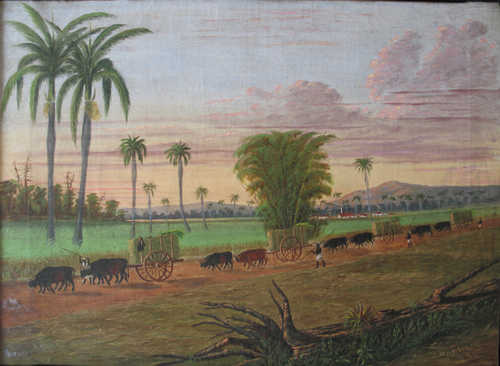A story by Seth Goldstein from 1800-1900
The average life span of an enslaved African, once they arrived in Cuba was seven years. These individuals were literally worked to death. In the 1800s, Cuba produced much of the world's sugar. This matters to Maine history because Cuba was Portland's primary trade partner. The profits from this trade were so lucrative that Cuba's forests were cut down and the fields grew almost exclusively sugar cane.
Maine provided the lumber that built the plantations and the food that fed the enslaved Africans. One 20th Century maritime historian described how whole houses, broken down, were shipped to Cuba along with parsnips, beets, potatoes, salt cod, board lumber and oxen to work the sugar presses. Maine also shipped broken-down wooden boxes and casks to be assembled once they reached Cuba. Coopers from Portland would travel to Cu-ba to assemble these casks and boxes so they could then be filled with sugar, molasses and rum.
These products, in turn, were shipped to Maine where the tallest building on the Portland waterfront was the J.B. Brown sugar refinery. The refined sugar graced dining tables throughout the region and this luxury product was exhibited in ornate sugar bowls.
In 1860 Portland was processing twenty percent of all the molasses that was imported into the US, more than any other city in the country. Some of the molasses would then go to one of the seven rum distilleries that dotted the Portland waterfront. Some of this rum was then shipped to West Africa to be used to purchase enslaved Africans.
Recent scholarship demonstrates that many of the ships involved in transporting enslaved Africans across the Atlantic were Maine-built ships, captained and crewed by Mainers. This is true both before and after the slave trade is declared a "piratical" act in 1820, punishable by death. It is notable that the only individual ever punished to the letter of the law was Captain Nathaniel Gordon who hailed from Portland. He was hung in 1862 after being convicted for carrying 897 enslaved people aboard the merchant ship Erie. Half of the enslaved people on the ship were children.
Friendly URL: https://www.mainememory.net/mymainestory/slavery_Maine_industries





